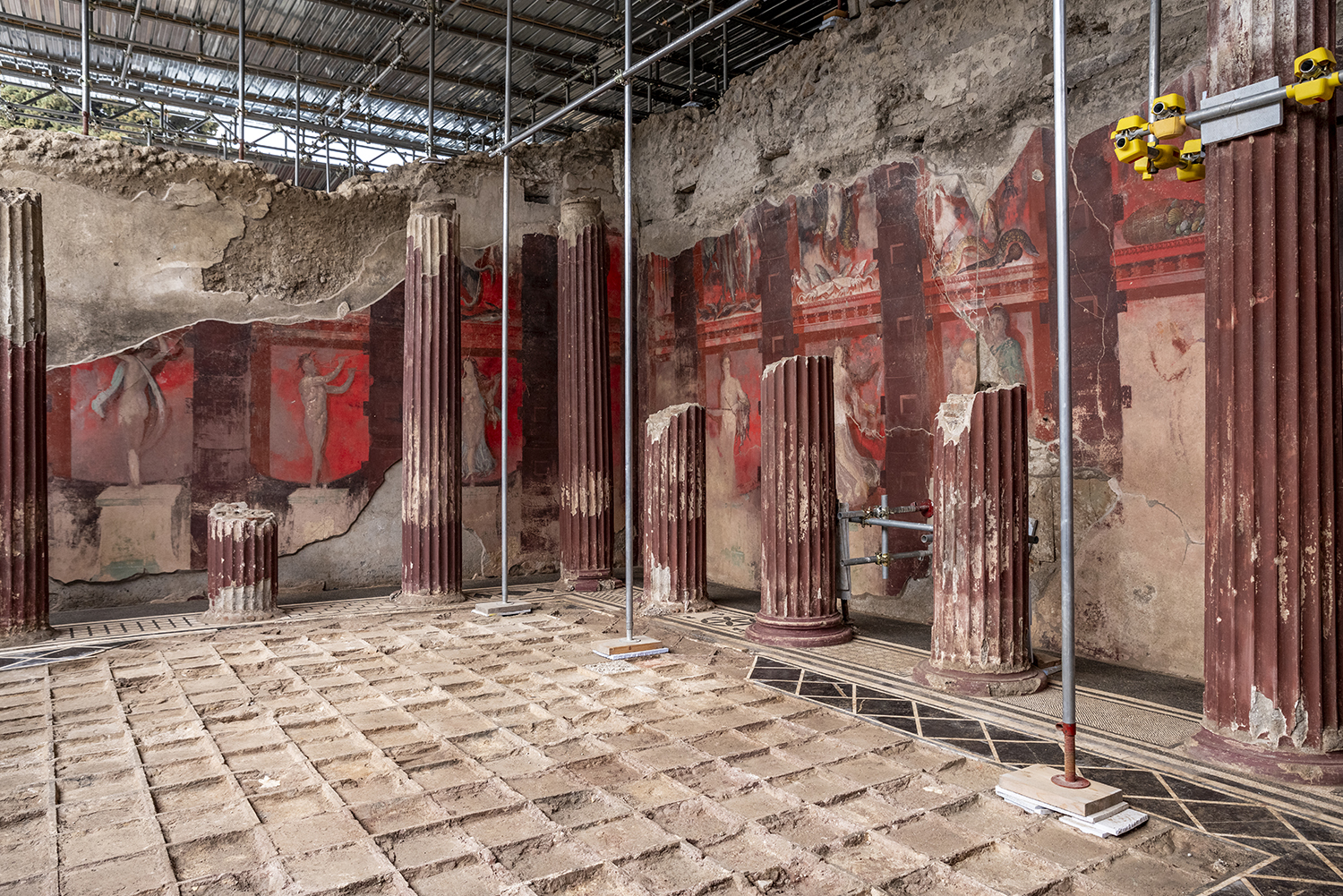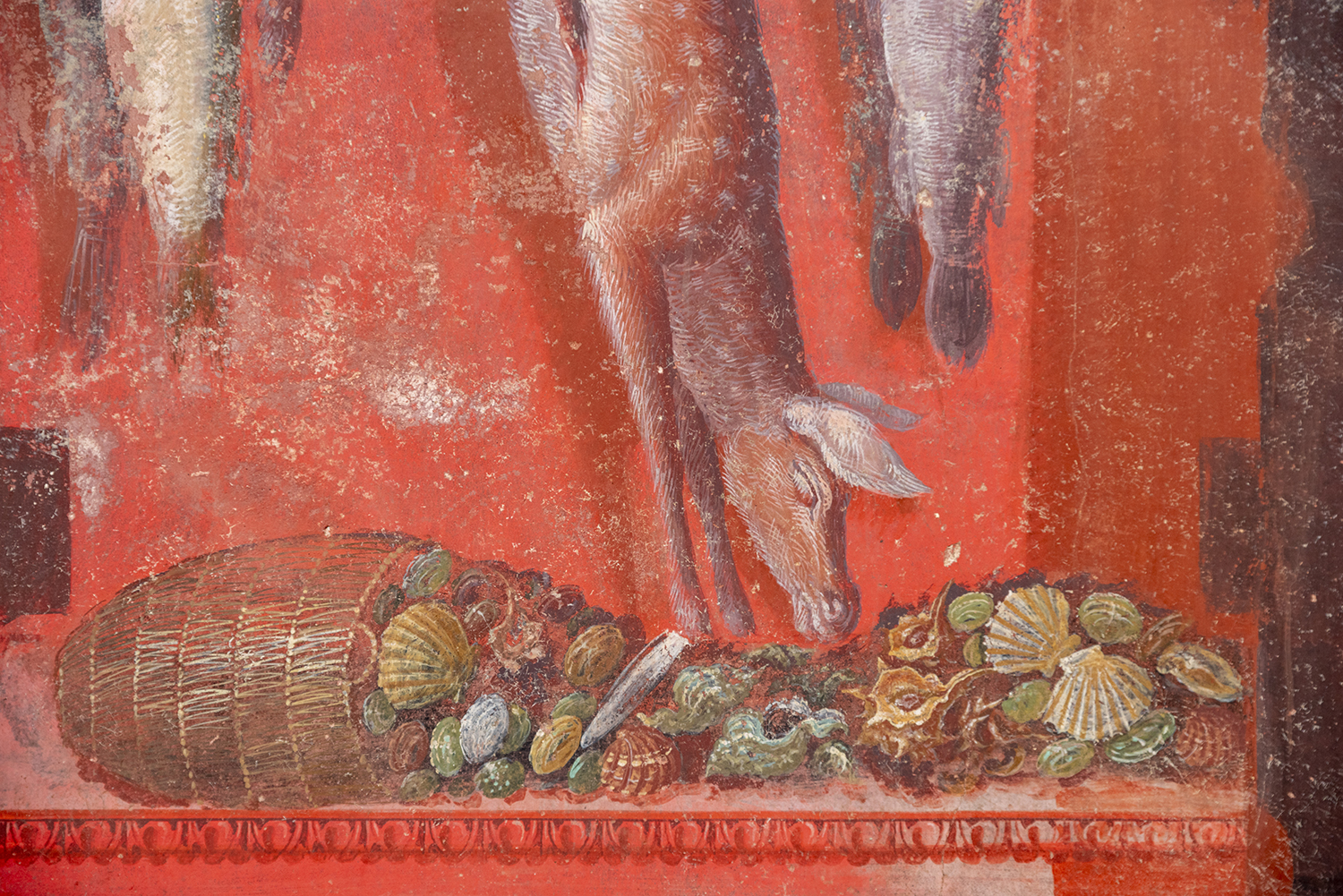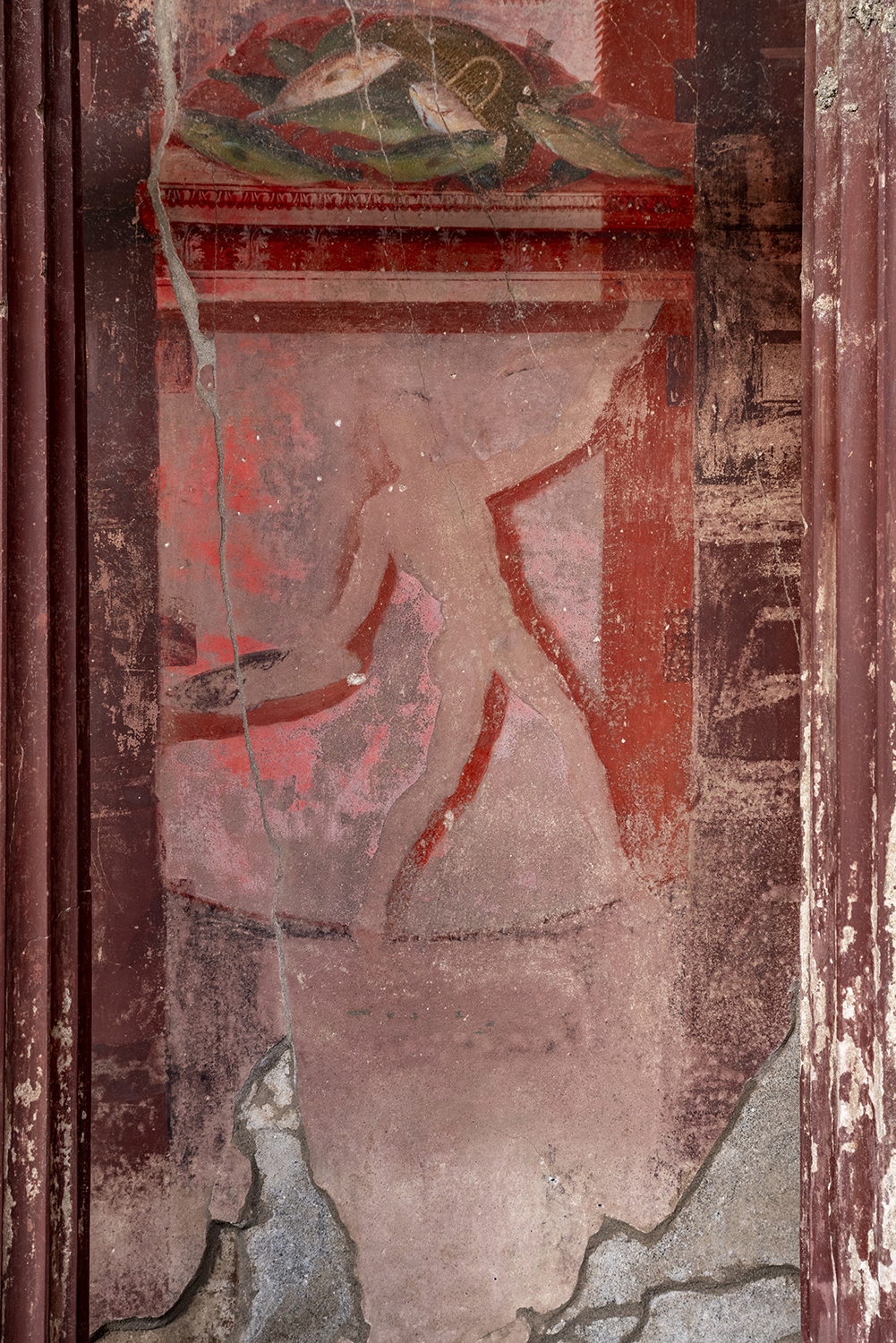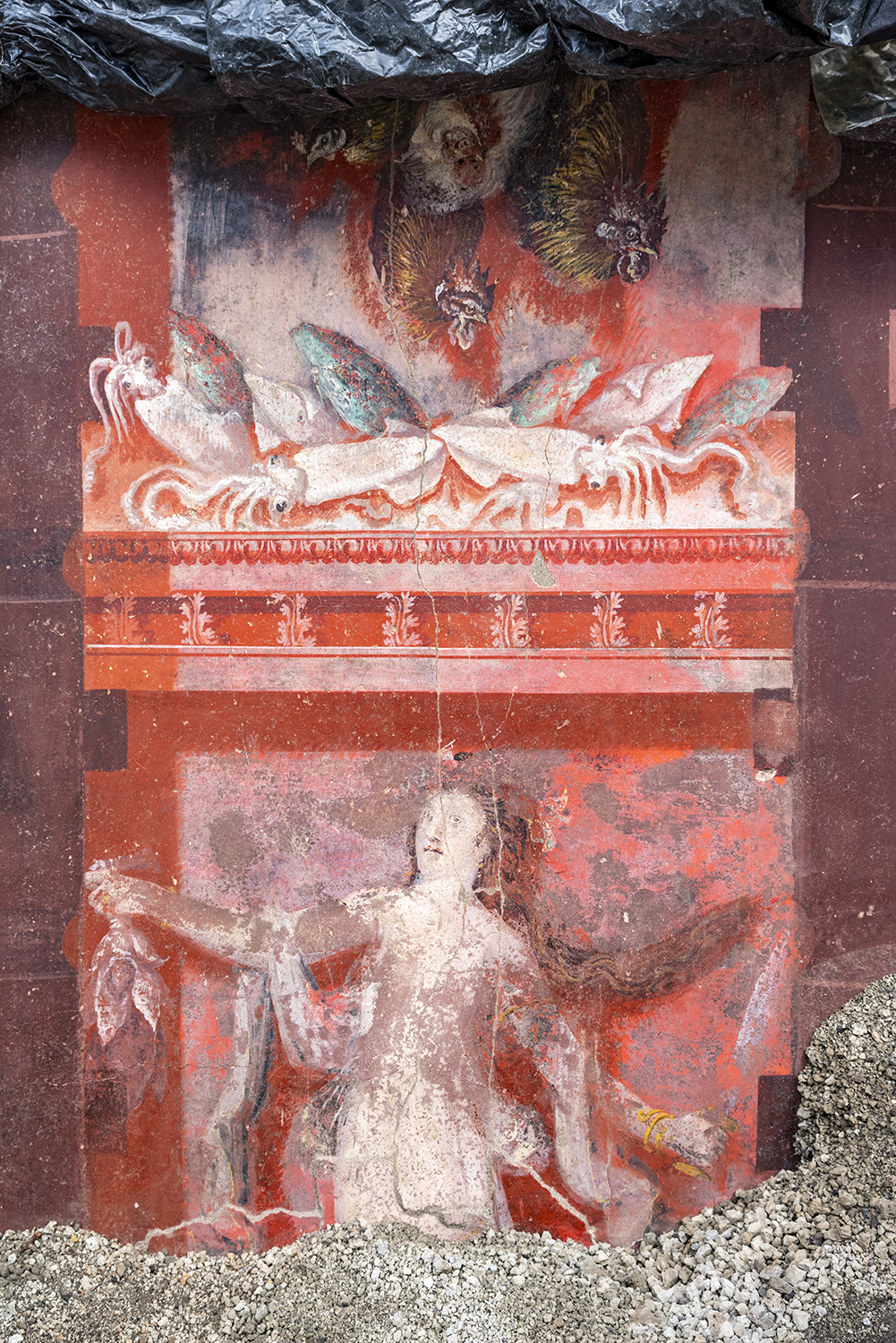A “new” Villa of Mysteries has emerged from the excavations in Pompeii, revealing a large banquet hall decorated with a series of frescoes depicting the initiation into the Dionysian mysteries.
Unearthed in recent weeks in the central area of Pompeii, the hall features this nearly life-sized fresco, known as a “megalography.” The only other known example is the so-called “Mysteries” fresco in the grand villa outside Pompeii’s gates, discovered over a hundred years ago.

The large fresco sheds new light on the mysteries of Dionysus in the classical world and decorates three walls of the room, leaving the side facing the garden unpainted. It vividly portrays the procession of the god of wine in nearly life-sized figures.

The scene includes Maenads depicted as dancers but also as fierce hunters, some carrying a slaughtered goat on their shoulders, others holding a sword and the entrails of an animal. Young satyrs with pointed ears play double flutes, while another performs a wine libation in an acrobatic style, pouring a stream of wine over his shoulder from a drinking horn into a shallow cup. At the center of the composition is a woman accompanied by an old Silenus holding a torch: she is an initiate, a mortal woman who, through a nocturnal ritual, is about to be initiated into the mysteries of Dionysus—the dying and reborn god who promises the same fate to his followers.

Archaeologists have named the residence with this fresco the “House of the Thiasos,” referring to the Dionysian procession. “For the ancients, the Maenad represented the wild and untamable side of women, the opposite of the ‘pretty’ woman who emulates Venus, the goddess of love and marriage—the woman who looks in the mirror and adorns herself,” explained Gabriel Zuchtriegel, the director of the archaeological park, during the press presentation. “Both the fresco of the House of the Thiasos and that of the Villa of the Mysteries depict women as suspended, oscillating between these two extremes, reflecting two modes of femininity in that era.”
A curious detail is that all the figures in the fresco are shown on pedestals, as if they were statues, yet their movements, complexions, and clothing make them appear remarkably lifelike.
Several cults, including that of Dionysus, were accessible in the Roman world only to those who underwent an initiation ritual, as suggested by the Pompeii fresco. These were called “mystery” cults because only initiates could learn their secrets. They were often linked to the promise of a blissful new life, both in this world and the afterlife.

The fresco belongs to the Second Style of Pompeian painting, dating back to the 1st century BC, more precisely between 40-30 BC. This means that at the time of the eruption of Mount Vesuvius in 79 AD, which buried Pompeii under ash and pumice, the Dionysian fresco was already about a century old.
“This day will be remembered as historic in a hundred years,” said Culture Minister Alessandro Giuli. “This underlines the importance and value of resuming excavations in Pompeii, which the government fully supports, recently allocating 33 million euros for excavation work, planned maintenance, restoration, and enhancement of this site and its surroundings. We are witnessing an important moment for Italian and global archaeology, accompanied by a significant increase in visitors, starting from this Archaeological Park: over 4.87 million visitors in 2023 and 4.177 million in 2024.”
“The Bacchae of Dionysus,” explained Zuchtriegel, who co-authored an initial study of the new find published in the E-Journal of Pompeii Excavations, “from Euripides’ The Bacchae of 405 BC—one of antiquity’s most beloved tragedies—becomes a metaphor for a wild, ecstatic life aiming at ‘something different, grand, and visible,’ as the chorus says in Euripides’ text. These frescoes carry a deeply religious meaning, but here they served to adorn spaces for banquets and festivities… much like finding a replica of Michelangelo’s ‘Creation of Adam’ on the wall of an Italian restaurant in New York. Behind these magnificent paintings, with their play on illusion and reality, we can see signs of a religious crisis affecting the ancient world, but we can also grasps the grandeur of a ritualistic tradition dating back to an archaic world,
at least as far back as the 2nd millennium BC, to the Dionysus of the Mycenaean and Cretan peoples, who was called Zagreus, lord of wild animals.”
The Dionysian Thiasos hall is now open to the public as part of site tours, which began at the start of the excavation for the various rooms progressively unearthed—over 50 spaces spread across more than 1500 square meters. The excavation uncovered two atrium houses, partially investigated in the 19th century, built during the Samnite period and later transformed into production workshops in the 1st century AD: a fullonica (laundry) and a bakery with an oven, including areas for milling and food processing to supply the city.












